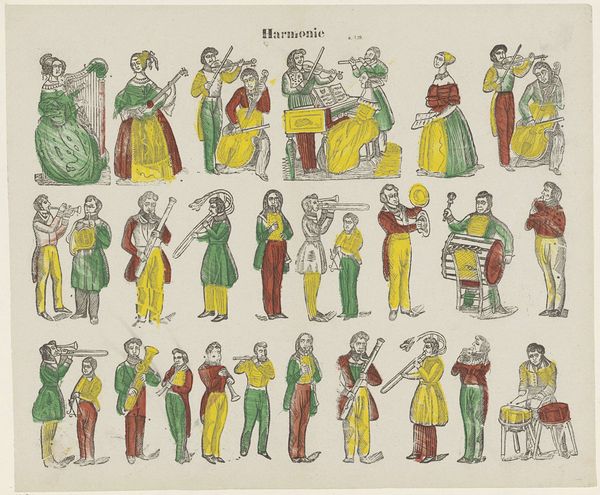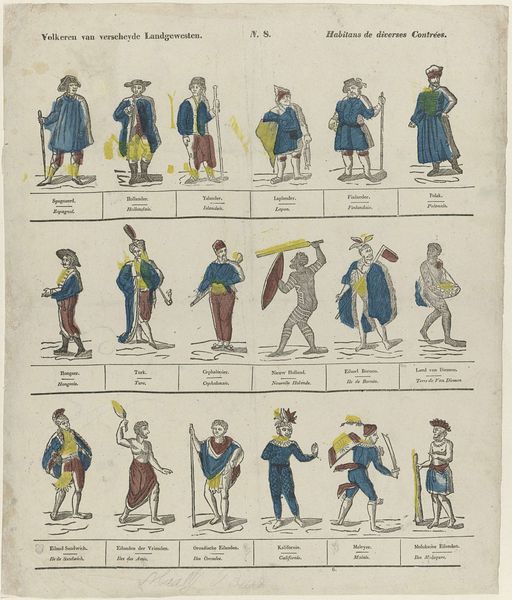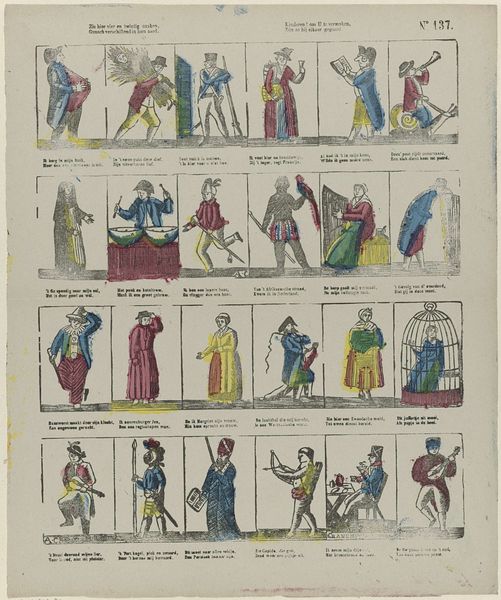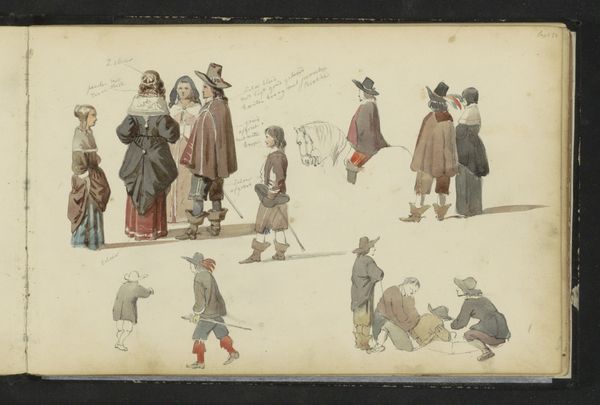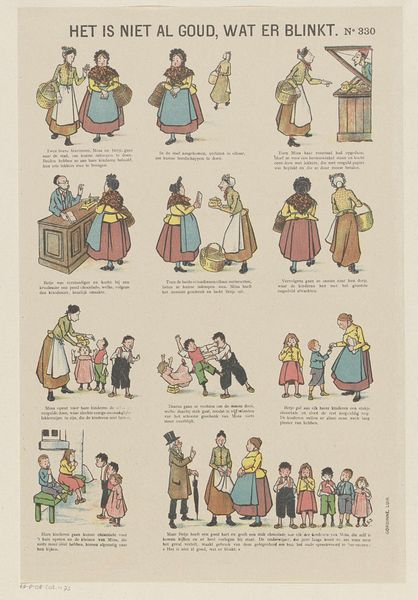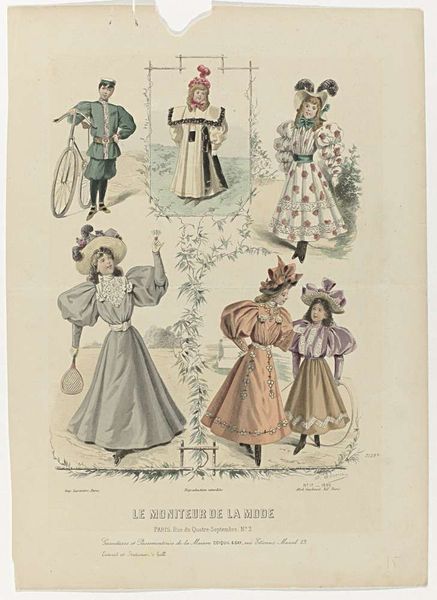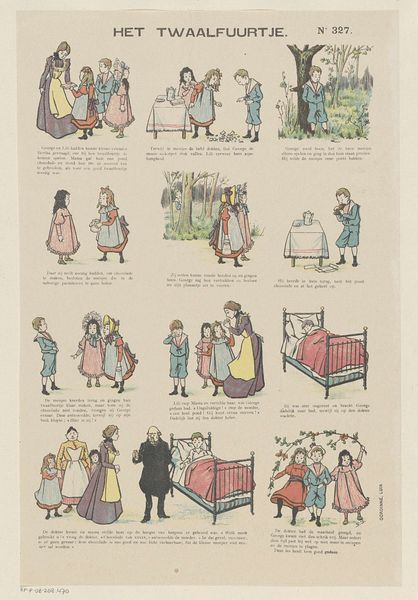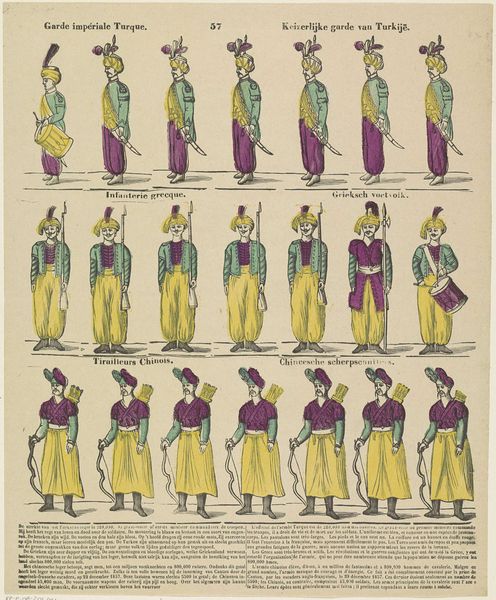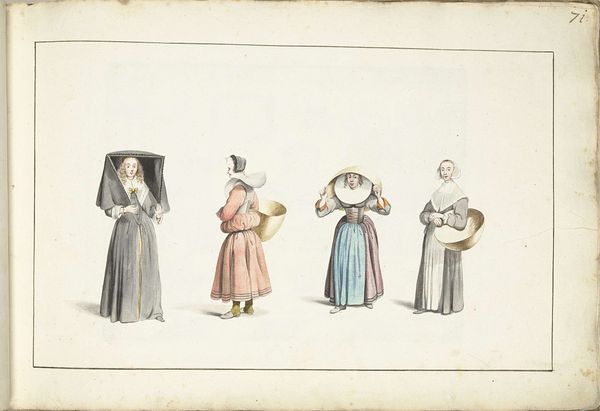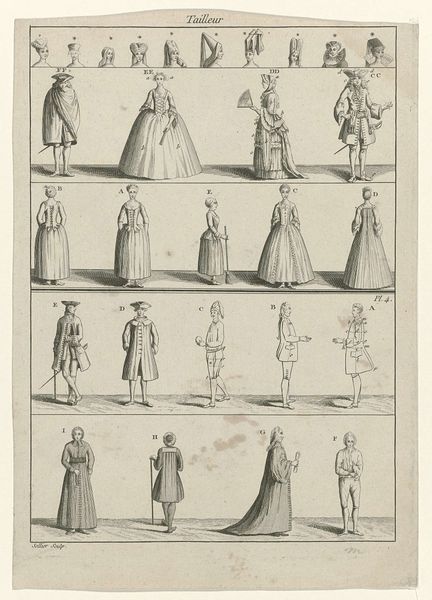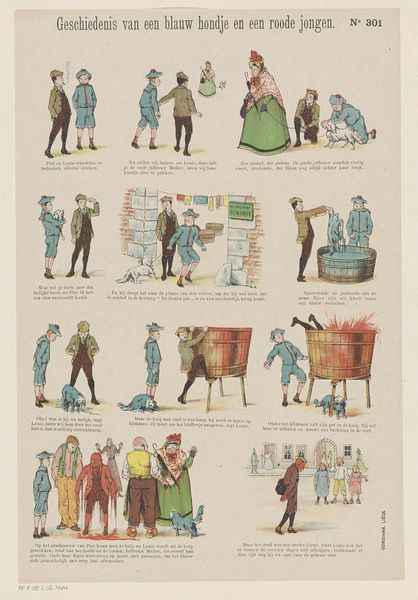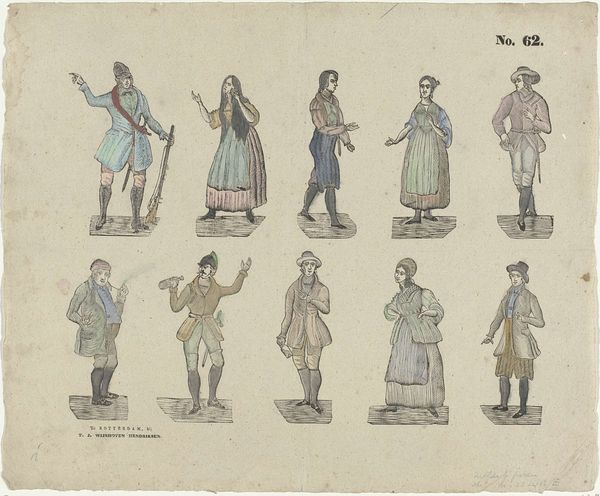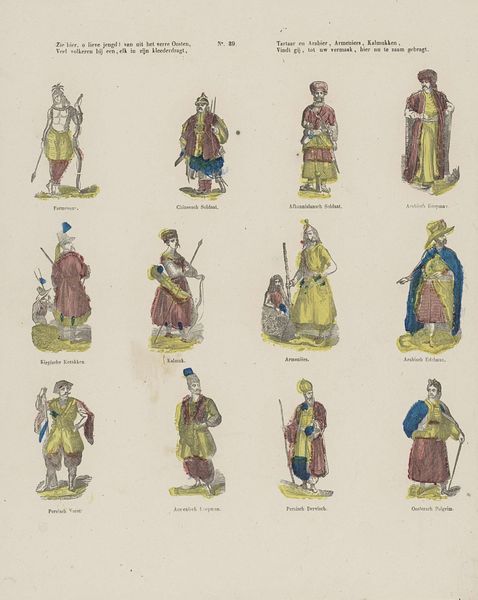
drawing, print, paper
#
fashion design
#
drawing
#
underwear fashion design
#
dutch-golden-age
# print
#
fashion mockup
#
collage layering style
#
fashion and textile design
#
figuration
#
paper
#
historical fashion
#
genre-painting
#
storyboard and sketchbook work
#
textile design
#
fashion sketch
#
clothing design
Dimensions: height 345 mm, width 424 mm
Copyright: Rijks Museum: Open Domain
Editor: So this is "Daguerréo-Typen," dating from around 1861-1865, by Hendrik Vleck. It's a print on paper, a collection of different figures with detachable heads... It feels like a precursor to paper dolls, almost a catalogue of societal characters. What strikes you about this work? Curator: It's fascinating how Vleck uses this seemingly playful format to encapsulate a very specific moment in cultural memory. The title itself, referencing daguerreotypes, hints at photography's burgeoning influence on how we documented and perceived identity. These aren’t just costumes; they’re types, social roles solidified into visual symbols. Notice the recurring motifs—baskets, hats, tools—they each tell a story about labor, status, and belonging. Editor: I hadn't thought about it that way, seeing them as 'types.' So, like, what story does the basket tell, for instance? Curator: Baskets appear frequently, particularly with female figures. They’re not merely props. Consider the cultural weight of the basket as a symbol: domesticity, sustenance, and often, the burden of labor. It evokes the iconography of Ceres, the Roman goddess of agriculture, subtly layering classical allusions onto these contemporary figures. What about the detachable heads? What do they signify to you? Editor: It's strange and funny - like a "mix-and-match" game, disrupting traditional portraiture. Maybe Vleck is saying these social roles are interchangeable, a bit performative? Curator: Precisely. And the interchangeability could also represent the fluidity of identity in a rapidly changing society, particularly with the rise of industrialization and urbanization. These visual symbols become unstable. Editor: That’s really interesting. It’s made me rethink the piece, moving beyond just seeing it as historical fashion. Curator: Indeed. It serves as a potent reminder that images are never neutral. They're laden with the emotional, cultural, and psychological weight of their time, constantly reinterpreted by each new gaze.
Comments
No comments
Be the first to comment and join the conversation on the ultimate creative platform.

